Gentle aroma diffusers - diffusing essential oils with care
They say that mistakes are the best ways to remember a lesson. Fortunately for me, one of the most memorable lessons with regards to gentle diffusion was caused by someone else’s error. Nevertheless, it has stuck with me…
In between the lockdowns in 2020, I went to get my hair cut. In the small local salon, the hairdresser had set up a gentle diffuser--you know, the kind which uses a candle to warm water in which a few drops of essential oil have been poured.
The idea was to fill the salon with the gentle scent of Jasmine. Probably due to the general stress of 2020, the salon owner had forgotten to put the water in the diffuser, and instead of the sweet scent of flowers, his salon was filled with the odor of burning oil…
Fortunately, there are other possible solutions for diffusing the delicate perfume of Jasmine (or other), which are addressed below.

The essential about gentle aroma diffusers
Gentle aroma diffusers are devices that gently spread aromatic oils using an external source of energy.
This could be e.g. through airflow by the use of a fan or employing a heat source (which may or may not be temperature controlled). We can add aromatic sprays to this list.
These aroma diffusers are generally intended for use in small or midsize rooms.
Structure of the article
1. Fan aroma diffusers
1.1 How do gentle aroma diffusers work??
1.2 Main characteristics
1.3 Best place to use a fan diffuser?
1.4 Fan aroma diffuser in action
2. Candle aroma diffusers
2.1 How to use a candle aroma diffuser
2.2 Potential problems with using a candle diffuser
3. Low heat diffusers
3.1 Wax oil warmer aroma diffuser
3.2 Low heat aroma diffuser (temperature controlled)
3.3 How are low heat aroma diffusers used?
3.4 Where can you use a low heat aroma diffuser?
3.5 Main advantage
4. Aroma spray, how to do it
4.1 You will need to make the aromatic spray
4.2 Recommendation
4.3 Reverse dilution calculation
4.4 The preparation of the blend for the spray
4.5 Use the spray
4.6 Advantage and limitations of the spray diffusion
4.7 Warnings about this recipe!
4.8 Ideas of blendings
5. To conclude
- Disclaimer
- Pictures
There are not very many techniques in use to bring about the gentle diffusion of essential oils. These techniques can mainly be divided into two camps:
- those which utilize airflow,
- and those with use heat.
1. Fan aroma diffusers
1.1 How do gentle aroma diffusers with fan work?
The concept behind these diffusers is very simple. A fan creates airflow across a felt pad onto which several drops of essential oils have been placed. These diffusers generally run on batteries, as they do not require a lot of energy. Alternative versions are plugged into a USB and/or wall socket.
1.2 Main characteristics for fan diffusers
The design of the fan diffusers is mostly
- Compact (up to 15 cm X 15 cm X 15 cm, or about the size of a toiletry bag).
- Robust (the diffusers I know are made of plastic).
- Designed to be as quiet as possible.
Some models are equipped with lights that can be altered to either glow gently or to change in various patterns, which may be useful in adapting the ambiance within a certain room.
Because these apparatus use a fan, some models are louder than others. In some cases, the intensity of the oil diffusion can be adjusted, creating more (or less) noise.
A typical fan diffuser produces approximately 40 dB of sound, which is considered “soft” [source]. To give you a means of comparison, this would be the same amount of noise present in a quiet library.
1.3 Best place to use a fan diffuser?
Because of these characteristics, these gentle diffusers are used for two main purposes:
- Traveling. These diffusers are pretty small and light. They can easily be slid into a suitcase, and are sturdy (no risk of getting water everywhere or broken glass).
- Small to medium-sized room. The airflow helps the aromatic molecules to be spread by the device to fill e.g. a small bedroom or an office.
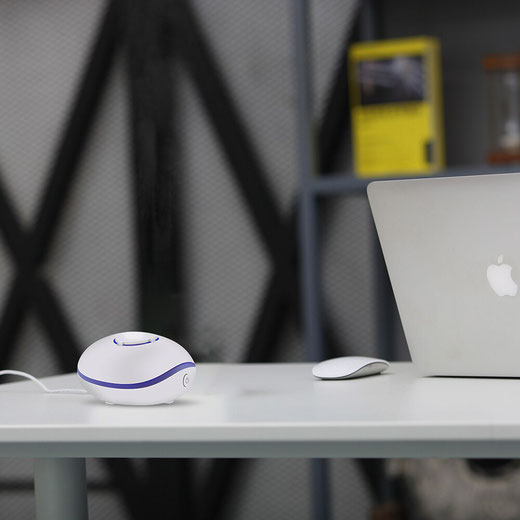
Tip
When you arrive in a new bedroom/hotel room, put a few drops on the felt pad and put the cover in place before running the machine. The oil will gently spread around the space, infusing the room with your chosen ambiance, helping you to e.g. feel better, fall asleep more quickly, or even to refresh the air of the room.
Of course, Lavender (Lavandula angustifolia) is a great oil to carry with you in this regard. It is calming and very versatile and, thus, is always my first choice when traveling.
There are different kinds of Lavenders. Do not diffuse the wrong one. If you want to know more about Lavender essential oils, please refer to Après-You’s article about the three main different essential oils of Lavender. Just type “Lavender,” and it will appear.
1.4 Fan diffuser in action
Test
I made an experiment in a bedroom (approx. 12.5 m2, 2m60 high) in which I placed a fan diffuser.
The diffuser was situated at one end of the room and had two drops of Ravintsara (Cinnamomum camphora) on the felt pad.
After 10 minutes of use, I could smell the oil at the entrance to the bedroom.
The concept behind fan aroma diffusers is inspired by nature. When the wind blows through flowers, it disperses aromatic molecules. Depending on the intensity of the scents and the force of the airflow, the diffusion efficiency tends to cover a couple of square meters.
2. Candle aroma diffusers
2.1 How to use a candle aroma diffuser
I conducted a survey at my weekly stand at the street market in Østerbro (Skt. Jacobs Plads, Copenhagen). I wanted to know how people diffuse essential oils. The results show that 33% of respondents use candle diffusers. It is a popular way to appreciate essential oils!
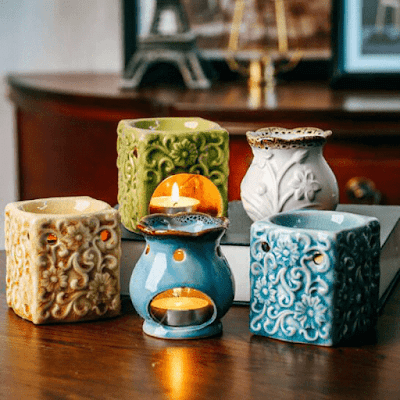
Candle diffusers have a small bowl into which you pour water and a few drops of essential oil. A candle under the bowl warms the water, thereby making the EO airborne and diffusing it through the air.
They come in many different shapes and colors, making it easy to find a version that suits your style and decor. Plus, as we all know, candles are great at giving that extra oomph to the interior atmosphere.
However, if you aren’t a candle person, you also can buy diffusers that have an electrical resistance as a heat source instead of the candle. They are so powerful that their temperature can reach 240 Celsus. The reason behind these high temperatures is that people also use them to burn resins like dragon’s blood resin (Daemonorops draco) or perfumed wood blocks like Palo Santo (Bursera graveolens).
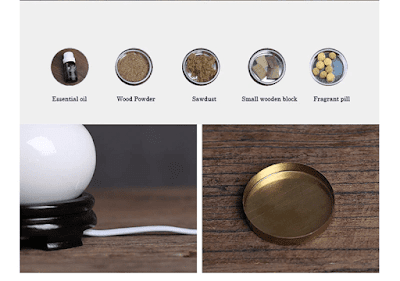
2.2 Potential problems with using a candle diffuser
Obviously, candles always have a certain element of risk because of the flame. However, people here in Denmark are frequent candle users; this part of the very well-known “hygge” culture.
The main problem with the use of candles in terms of oil diffusion relates to temperature control. Temperature is actually very important, as heat can accelerate the degradation of the chemical constituents of our favorite oils, potentially making them harmful.
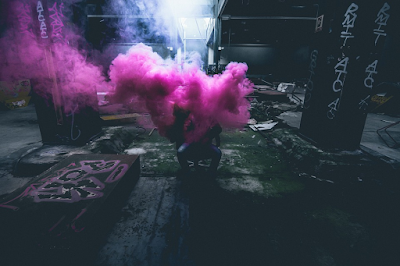
There is an article published in 2012 about that subject [page 43 of this article written by Dr. Claudia Turek and Florian C. Stintzing].
Let me give you a quick example of how heat damage works. There is a molecule called citral which comprises up to 96% of the popular Lemon myrtle oil (Backhousia citriodora). Citral has several interesting properties; it is anti-inflammatory, a sedative, and also an anti-fungal [source] [source].
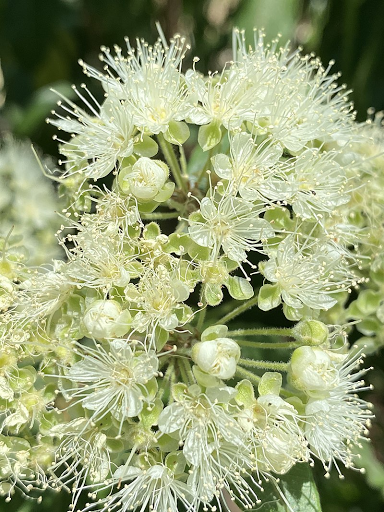
Unfortunately, the downside of citral is that it can be unstable and oxidize quickly. When citral degrades, it produces a new molecule (called paracymene, also known as p-cymene). Regrettably, in high doses, this molecule can cause headaches, nausea, and/or vomiting. Through heat and exposure to oxygen, citral’s properties change.
2.3 For this reason, heating essential oils too strongly is not a great idea.
The good news is that you do not need to understand the chemistry to detect whether or not oil has turned; you just need to trust your nose. Keep an eye (or nose!) on your oils; if their scents change noticeably, they may have turned and should be discarded.
A general rule of thumb, in the aromatherapy world, is not to heat oils over 40 degrees Celsus, to ensure that you maintain their good properties.

Tip
Always pay attention when using essential oils in your car. Depending on the season, the temperature inside the vehicle can quickly exceed 40 Celsus.
The best solution is to ensure that the candle's heat is high enough to help the oil evaporate, but that it is not too excessive. This is not the case with all candle aroma diffusers!
3. Low heat diffusers
Low heat diffusers heat the oils gently to spread them around. The main characteristic of these diffusers is that temperature is controlled to maintain the benefits and properties of the aromatic oils being applied. Although these diffusers are not the most common ones, they do have many advantages.
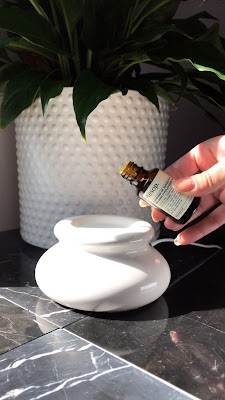
Low heat aroma diffusers can be found in two models.
3.1 Wax oil warmer aroma diffuser
The first of these is similar to the candle aroma diffuser and has more or less the same shape. Instead of using a candle, this diffuser makes use of a light bulb whose intensity is adjustable.
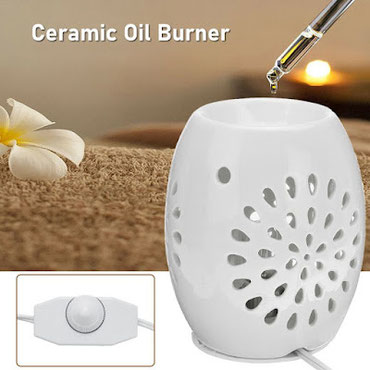
These diffusers are a great solution for avoiding the fire hazards and temperature issues associated with candle diffusers. Some versions are quite versatile, allowing you to choose between either employing a candle or a bulb as the heat source for diffusion.
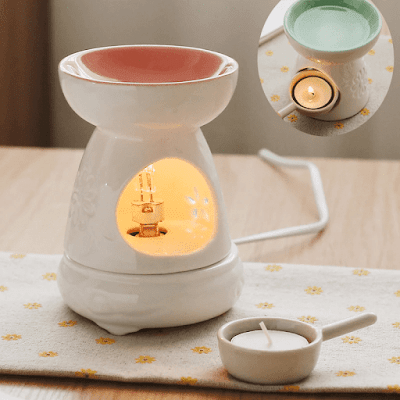
3.2 Low heat aroma diffuser (temperature controlled)
The second model of low heat aroma diffuser tends to be a single block. The electrical resistance is hidden inside the body of the diffuser so that there is no risk of contact between the oil and the electrical circuit.
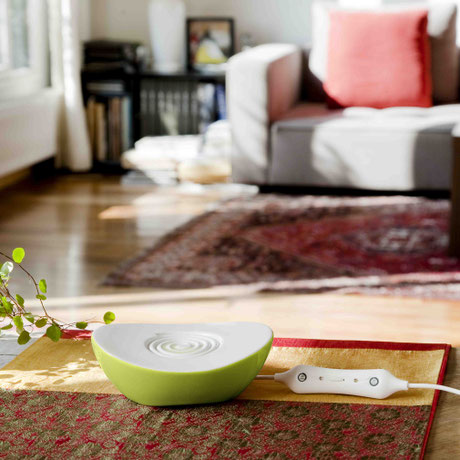
3.3 How are low heat aroma diffusers used?
The latter models are very simple to use. Once you have plugged the cable into a socket, the diffuser is ready for use. Just pour a few drops of essential oil on the top of the diffuser and start it. Depending on the model, you can control the intensity of the heating element and the time of diffusion remotely.
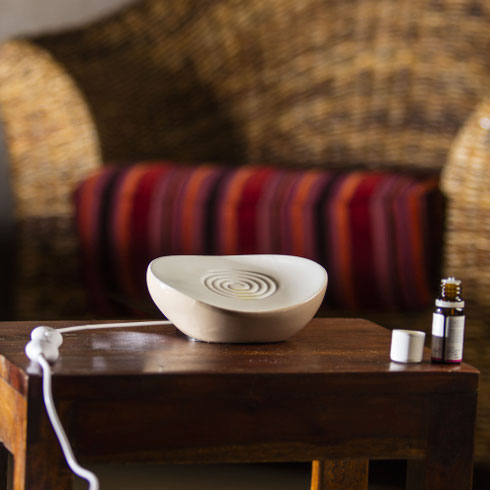
Tip
The best way to use these kinds of diffusers is to pour a little bit of vegetable oil in first and only afterward to add a few drops of aromatic oil. By using vegetable oil first, you will create a film between the aroma diffuser and the essential oil, making the device much easier to clean and helping to avoid “leftover” smells from previous diffusions.
3.4 Where can you use a low heat aroma diffuser?
Like fan aroma diffusers, these diffusers are for use in small rooms (c. 10-15 m2).
3.5 Main advantage of the temperature controlled aroma diffusers
The main advantage of choosing a low heat aroma diffuser is that it allows for temperature control and is very quiet. The heating system is absolutely silent. If you have very sensitive ears, this is the diffuser for you.
4. Aroma spray, how to do it?
One form of gentle aroma diffuser which I did not touch upon in this article is the use of a spray. Spray diffusion works the same way as does misters; pressure forces oils to pass through small holes, making airborne droplets.
Below find a recipe for making your own spray, which I have adapted from [source].
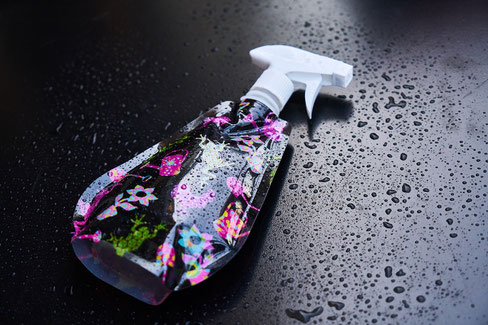
4.1 You will need to make the aromatic spray
The recipe of aroma spray I propose requiered:
- Spray bottle (240 ml),
- 200 ml vodka or pure alcohol,
- 15 to 20 drops essential oil blend
4.2 Recommendation
- The best would be to use a glass bottle. Some essential oils (especially the terpenic ones, like Laurel, Tea tree, Cypress, etc.) can be hard on plastic.
- The original recipe calls for a mix of water and vodka, rubbing alcohol, or witch hazel. I removed the water from my version because it creates an environment subject to the development of bacteria. You can only keep vodka as a “carrier liquid” because it is the easiest, safest and cheapest solution to create a blend without altering the scent of the composites. In Denmark we can buy bottle of alcohol of 94%. It is the best solution because the % of aclohol is so high that you will not have to check before using.
- Why 200 ml of vodka and not 240 ml? You need to add essential oils to the mix, and you also need room for the pump and the tube to fit inside the bottle.
- Don’t have a 240 ml spray bottle? No problem! Just respect the same proportions of vodka and EO, and you’re good to go.
4.3 Reverse dilution calculation
I also did a calculation of the dilution rate for this recipe with 200 ml of “carrier liquid” and 20 drops of essential oils. I created a very useful calculator that you can find. The calculator is free of use when you are part of the VEP group. More information about this group here. You can also find an free access dilution calculator here.
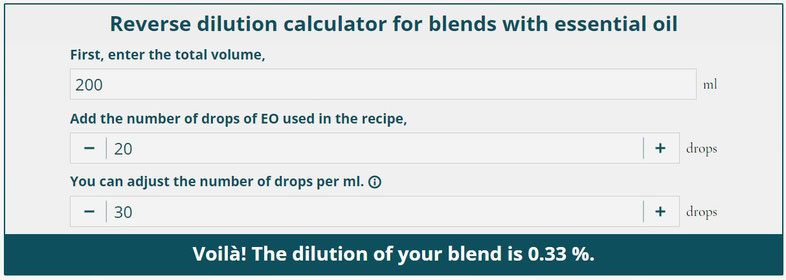
If you feel the spray is not strong enough, with a 0,33% of dilution rate, you have room to increase the number of drops (without excess) to get the desired scent and effect.
4.4 The preparation of the blend for the spray
- Pour vodka or alcohol into the spray bottle.
- Add the 15 to 20 drops (total) of essential oils. You can use either a single smell or you can make your own blend. Below, you will find a list of blend ideas with the right proposition of drops for this base recipe.
4.5 Use the spray
Whenever you want to freshen up your room, shake the bottle and give the room three to four squeezes.
The oils will naturally separate over time, so you will need to shake the bottle each time before you use it.
4.6 Advantage and limitations of the spray diffusion
It is an easy way to gently diffuse essential oils. The size of the droplets created will be too large to leave the oils in suspension in the air. Therefore, the droplets will soon fall to the ground. This same recipe could also be easily adapted into a cleaning spray, but that is another story:)
4.7 Warnings about this recipe!
- Do not drink the spray!
- Do not let children use the spray unsupervised
- Do not spray directly onto the body or face.
- I highly recommend noting the date of production and ingredients on the bottle (i.e with a sticky note) You do not want to find the spray in a couple of months without knowing what is inside it. We have so many things to remember. Reminders are always a good idea.
4.8 Ideas of blendings
After all the information you may need some ideas of blends.
Good luck, an article [here] has been writen with some ideas to create your own synergy for
- Calming
- Energizing
- Fresh
- Refreshing
One of the beauty of the essential oils is to mix them together and get a synergy. It means that 1+1 is not equal to 2, but to 2,5 or 3. It means the blanding oils together enhance their actions.
It sounds a bit strange but you have to try it to measaure the power of synergy.
The receipes in the articles are composed of two to five oils to make them simple to do.
You can use them in a spray or diffuser theem straight in a diffusers.
Be inspire, play with the oils, enjoy your creation, and tell me what you think about theire effects.
I would love to hear from your experience.
5. To conclude
The gentle diffusion of essential oils could be a great practice for changing the atmosphere of a small- to middle-sized room. There are different techniques, including fan, heat- powered diffusers, or spray.
As a rule, I do not recommend candle diffusers because, when unmonitored, temperatures can alter the chemistry of aromatic oils, potentially making them dangerous.
When you travel, however, fan or low heat diffusers are an excellent choice.
Generally, these kinds of diffusers are robust and small, but still, go a long way to making a new space feel more “homey”.
A aroma spray is an easy solution to use essential oil if you use alcohol, you will be able to keep it for a wild and use it everywhere in you house.
Be safe, be essential!
You can be part of the Very Essential People group.
You will get informed of the new articles and you will get discounts on the Après-You e-shop, you just have to sign up.
It is free and without engagement.
Disclaimer
I do not pretend or want to replace any medical judgment or prescription. All the information within this post is intended to be informative! Please, always use essential oils carefully and with respect. In case of doubt, always ask a medical professional first.
Pictures
If you have any questions or remarks about the pictures and credits, feel free to send an email to info@apres-you.com.




Write a comment